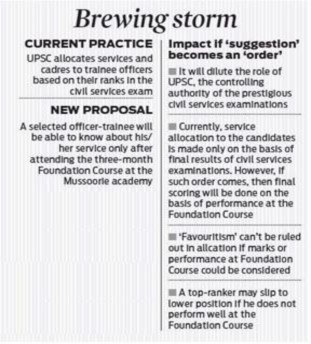Way Ahead
♤ The New Cadre policy (2017) looks to resolve these issues. The new policy is aimed at
ensuring ‘national integration’ in the country’s top bureaucracy.
♤ The new policy will seek to ensure that officers from Bihar, for instance, will get to work in southern and north- eastern states, which may not be their preferred cadres.
♤ All India Services officers are supposed to have varied experience which can be earned if they work in different states. It will also give them knowledge of best practices.
New Cadre Policy (2017)
In the new policy, aimed at “national integration”, divides the 26 states into 5 zonal cadres.
♤ Zone-I - AGMUT, Jammu, and Kashmir, Himachal Pradesh, Uttarakhand, Punjab, Rajasthan, and Haryana
♤ Zone-II - Uttar Pradesh, Bihar, Jharkhand, and Odisha
♤ Zone-III - Gujarat, Maharashtra, Madhya Pradesh and Chhattisgarh
♤ Zone-IV - West Bengal, Sikkim, Assam-Meghalaya. Manipur, Tripura
♤ Zone-V - Telangana. Andhra Pradesh, Karnataka, Tamil Nadu and Kerala
Candidates have to give cadre choices in descending order of preference from among the various zones. Candidates can only select one state/cadre from a zone as their first choice. Their next choice has to be from a different zone. It is only after selecting first choice in all the zones, one can select the second state/cadre from the first zone. Earlier the candidates used to choose their home state as their first choice and neighbouring states as their subsequent preferences.

♤ Lateral Entry: Also the recent move by the government to directly recruit experts for specialized position is a welcome move and in accordance with the recommendation of 2nd ARC.

In May 2018, DoPT on the advice of PMO has proposed to change the rules for allocating services and cadres based on the combined score of performance in the Foundation Course and Civil Services Examination. The proposal has been sent to several departments for consideration. Currently the cadres are allocated completely based on the candidate’s preference and rank in the Civil Services examination.

♤ Reduction in size of cadres: The proliferation of inconsequential posts is a proximate cause of both demoralization and the ability to use transfer as a penalty. Therefore the size of cadres should be reduced after periodic reviews.
